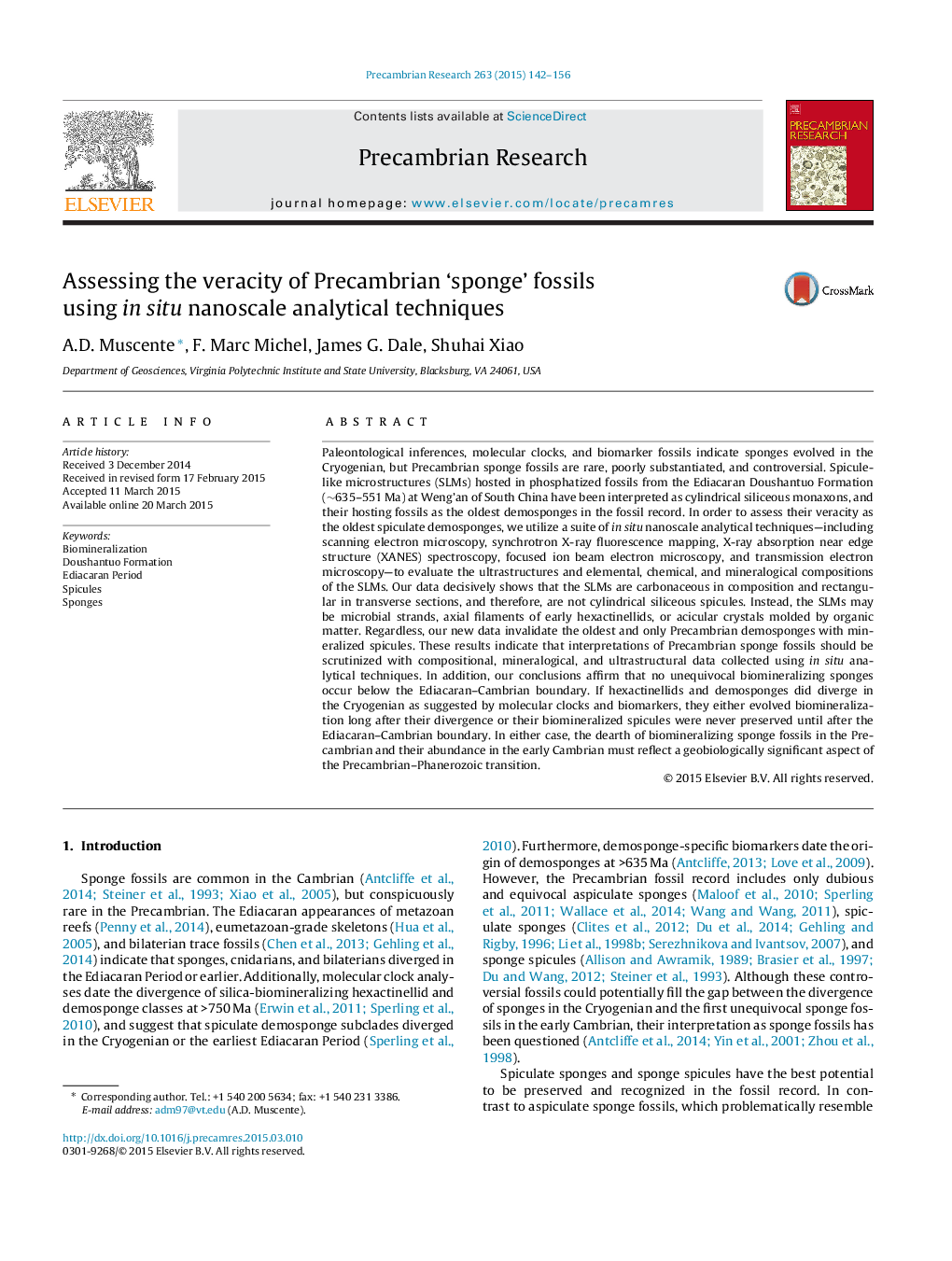| کد مقاله | کد نشریه | سال انتشار | مقاله انگلیسی | نسخه تمام متن |
|---|---|---|---|---|
| 4722699 | 1639612 | 2015 | 15 صفحه PDF | دانلود رایگان |

• We characterize spicule-like structures hosted in Ediacaran phosphatized fossils.
• Their compositions, mineralogies and ultrastructures are inconsistent with spicules.
• They may be microbial strands, axial filaments or carbon-molded acicular crystals.
• Data invalidate oldest and only Precambrian demosponges with mineralized spicules.
• The results affirm no unequivocal biomineralizing sponges occur in the Precambrian.
Paleontological inferences, molecular clocks, and biomarker fossils indicate sponges evolved in the Cryogenian, but Precambrian sponge fossils are rare, poorly substantiated, and controversial. Spicule-like microstructures (SLMs) hosted in phosphatized fossils from the Ediacaran Doushantuo Formation (∼635–551 Ma) at Weng’an of South China have been interpreted as cylindrical siliceous monaxons, and their hosting fossils as the oldest demosponges in the fossil record. In order to assess their veracity as the oldest spiculate demosponges, we utilize a suite of in situ nanoscale analytical techniques—including scanning electron microscopy, synchrotron X-ray fluorescence mapping, X-ray absorption near edge structure (XANES) spectroscopy, focused ion beam electron microscopy, and transmission electron microscopy—to evaluate the ultrastructures and elemental, chemical, and mineralogical compositions of the SLMs. Our data decisively shows that the SLMs are carbonaceous in composition and rectangular in transverse sections, and therefore, are not cylindrical siliceous spicules. Instead, the SLMs may be microbial strands, axial filaments of early hexactinellids, or acicular crystals molded by organic matter. Regardless, our new data invalidate the oldest and only Precambrian demosponges with mineralized spicules. These results indicate that interpretations of Precambrian sponge fossils should be scrutinized with compositional, mineralogical, and ultrastructural data collected using in situ analytical techniques. In addition, our conclusions affirm that no unequivocal biomineralizing sponges occur below the Ediacaran–Cambrian boundary. If hexactinellids and demosponges did diverge in the Cryogenian as suggested by molecular clocks and biomarkers, they either evolved biomineralization long after their divergence or their biomineralized spicules were never preserved until after the Ediacaran–Cambrian boundary. In either case, the dearth of biomineralizing sponge fossils in the Precambrian and their abundance in the early Cambrian must reflect a geobiologically significant aspect of the Precambrian–Phanerozoic transition.
Journal: Precambrian Research - Volume 263, July 2015, Pages 142–156